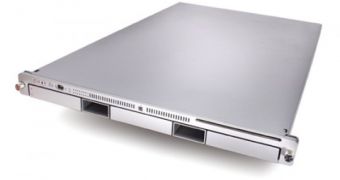Users on the Apple Support Communities forum are reporting that Apple’s newest incremental update to Snow Leopard (Mac OS X 10.6.8) is directly at fault for a higher-than-average CPU load on Xserve computers.
Discontinued earlier this year, the Xserve was Apple’s line of rack-mountable dedicated line of server computers.
So, one may say it is no surprise that users are starting to report issues with maintenance updates to Snow Leopard precisely after the last version that fully supported Xserves.
However, for a company like Apple, that’s unacceptable.
One affected user is telling AppleInsider that the problem lies in the hardware monitoring daemon.
Identified as 'hwmond' in the Mac OS X Activity Monitor, the component “takes up around 95% CPU after the update," this person wrote in an e-mail.
"I have personally installed the update on two xserves and both now suffer from the issue," he said.
“hwmond is causing up to 70% cpu load after every reboot on several xserves i manage caused by the update to 10.6.8,” a user writes at Apple Support Communities, with many users echoing his post.
"So it must be a bug in how hardware monitoring is communicating with the sensors in xserve that is giving it fits," another user wrote on Apple's forums, "or is this Apple's way of making us try and get rid of our xserves, haha," he joked.
Another growing thread on Apple Support Communities, titled “Problems with 10.6.8,” talks about a broader set of issues experienced by users of the Client version of Snow Leopard.
One user in particular claims to have reached Apple Support on the phone who allegedly told him there were, indeed, some issues with OS X 10.6.8.
If indeed true, Apple may soon release a patch to address what appears to be a broader set of issues with the latest maintenance release of Snow Leopard.

 14 DAY TRIAL //
14 DAY TRIAL //